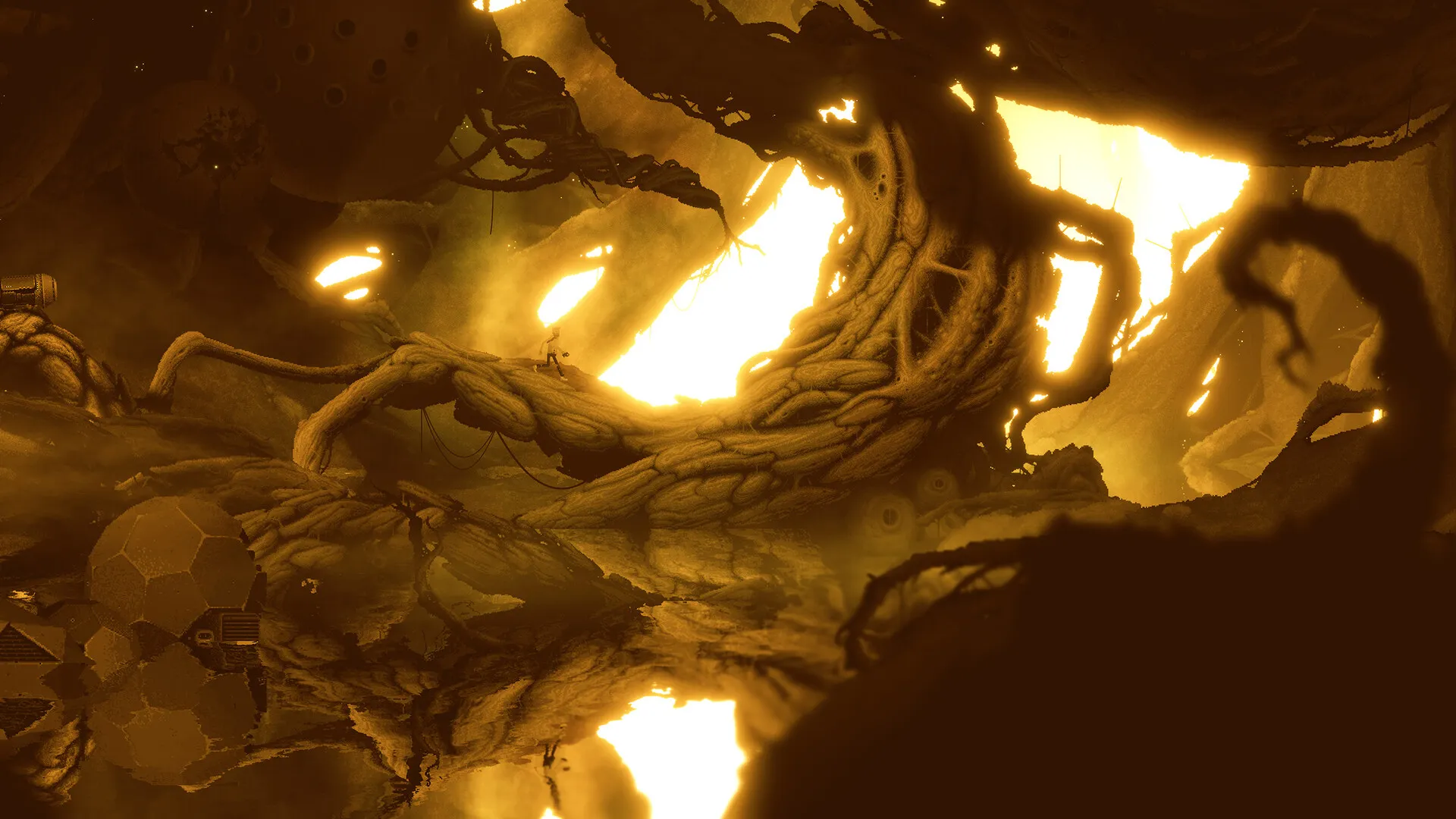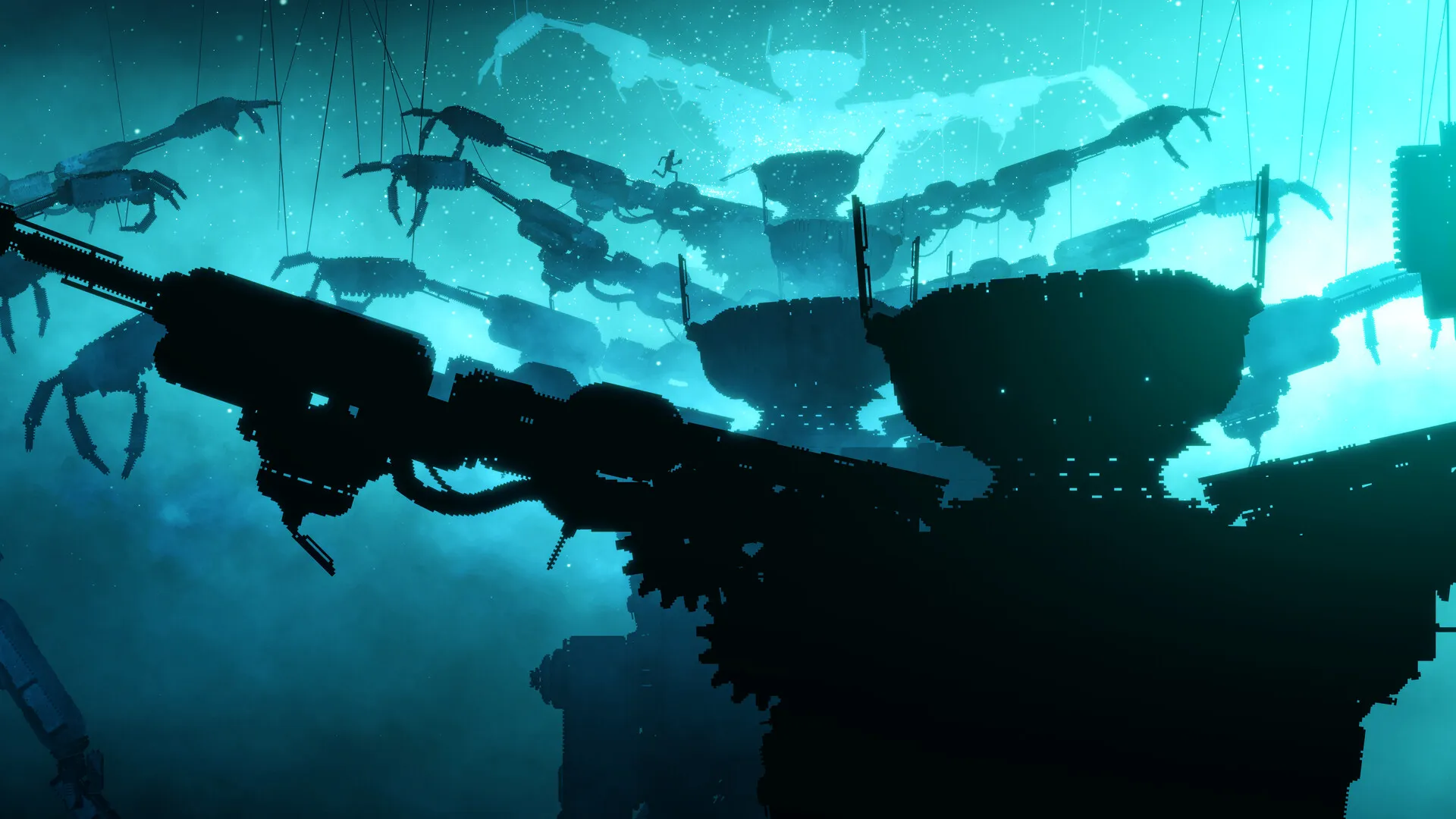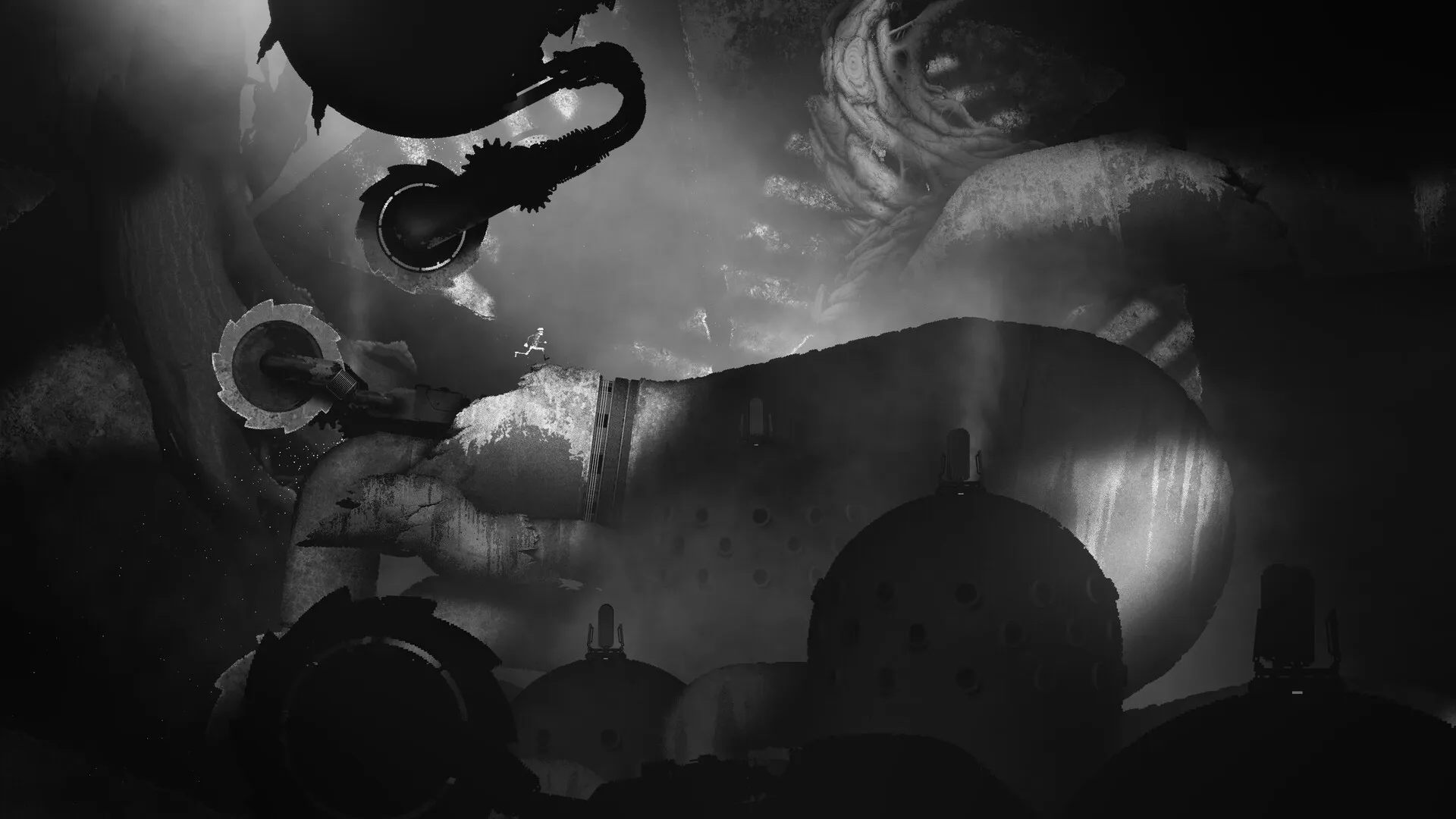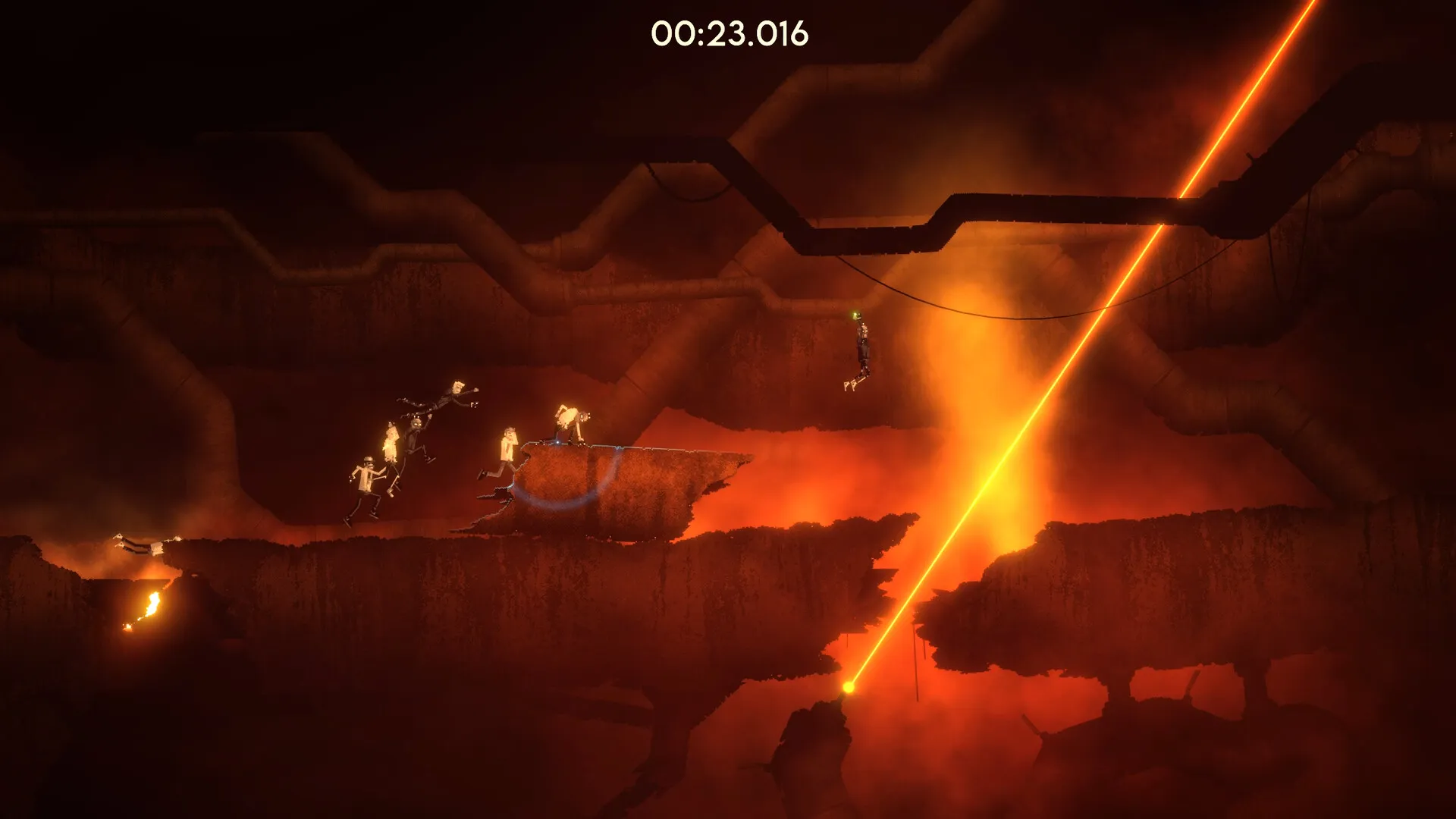Bionic Bay drops you head‑first into a pixel‑perfect puzzle labyrinth where physics tools feel like extensions of your own curiosity. You step into the shoes of Werner, a bespectacled scientist whose routine experiment goes awry when a colossal alien egg detonates.
In the blink of an eye, Werner finds himself stranded in a sprawling biomechanical complex that seems alive with hidden gears and lurking hazards. Every corridor, platform, and chamber tells a wordless story of scientific hubris and alien secrets waiting to be unearthed.
This project marks the first major collaboration between indie newcomers Mureena and Psychoflow, joined by a small but passionate team. Launched simultaneously on PC and consoles earlier this year, the game arrives at a moment when precision platformers are staging a quiet renaissance among RPG‑minded players who hunger for mechanical depth in unexpected places.
What sets Bionic Bay apart is the way each power—be it teleport‑swap, time‑slow, or gravity‑flip—feels woven into the narrative itself. The game doesn’t hand you new abilities as mere upgrades; it invites you to rethink every scrap of scenery as a potential ally or obstacle. Backed by razor‑sharp pixel art and a challenge curve that rewards both experimentation and skill, Bionic Bay insists you learn the world’s rules through action, forging an unspoken bond between player choice and story discovery.
Pixels and Pulse
From the first moment you enter Bionic Bay’s world, its pixel‑art clarity demands a double take. Each foreground object is rendered with razor‑sharp edges, while parallax layers shift at varying speeds to give depth—much like the approach in Celeste, yet here every layer feels freighted with purpose. The transition from the blood‑red corridors to verdant machinery and finally to cobalt‑hued dreamscapes doesn’t just mark chapters; it cues your expectations for new hazards and puzzles.
Werner’s tiny sprite might seem at odds with the massive environment, but that contrast fuels the tension. His movements are buttery smooth, and the physics‑driven ragdoll flourishes—which send him flopping or splatting in hilarious ways—remind you that failure can be as entertaining as success. Compared to the stiff falls in Limbo, these moments feel intentional, almost celebratory.
The game’s biomes range from claustrophobic factories—lit by harsh fluorescent shafts—to surreal fields of suspended neural tissue that glow against black voids. Sharp silhouettes and high‑contrast trims guide your eye toward climbable ledges or lurking sawblades, echoing the visual shorthand of Inside but with a more industrial edge.
On the audio side, low‑frequency hums underpin every level, occasionally punctuated by a glitchy synth riff or a solitary piano note that tugs at your curiosity. Death triggers a gratifying “squelch” or “sizzle,” turning each misstep into a micro‑event rather than a punishment. It’s best experienced through quality headphones, where even distant mechanical clanks and echoing drips gain texture.
Technically, the game never falters. Whether you’re chaining gravity flips or swapping mid‑air, the frame rate holds steady at 60 FPS, and collision physics never betray you. That reliability is crucial when precision timing is not a luxury but a necessity.
Precision in Motion
Werner’s basic toolkit—run, jump, dash/roll—feels deceptively simple until you factor in the intentional “float” that gives each leap a moment to adjust its arc. That slight hang time calls to mind the air control in Celeste, yet here it never undermines tension; every extra frame aloft is a chance to gauge shifting hazards or thread a narrow gap. When Werner gains his first dash upgrade, the narrative stakes rise in tandem: it’s not just a new move, but proof that his scientific ingenuity is learning to bend the alien facility to his will.
Beneath these actions lies a physics engine that consistently conserves momentum. Pick up the elasticity module and you’ll discover bounce puzzles that transform wrecked cargo crates into makeshift trampolines. Flung explosive barrels can carve new paths through molten metal, while rotating laser grids demand precise timing to traverse. Each interactive element serves as a storytelling beat: when you swap places with a hovering energy sphere, you’re not just solving a puzzle—you’re reversing the chaos unleashed by the initial explosion.
Control response is razor‑sharp. Button inputs register without delay, and you can remap every action in the settings menu. A built‑in tester lets you trial your layout before plunging back into a gauntlet that requires frame‑perfect moves, echoing the seamless accessibility choices of Hollow Knight. Whether you’re a newcomer or a speed‑running veteran, the option to customize your controls ensures nobody is locked out of Werner’s odyssey.
Tutorials appear organically through holographic projections that demonstrate new powers in situ, coupled with subtle on‑screen prompts. They never pause the world; instead, they set you loose moments before a gravity‑flipping chamber or a time‑slow challenge, so you learn by doing. That pacing—teaching just in time, without breaking immersion—is how Bionic Bay makes every mechanical lesson feel like a narrative revelation.
Swapping Fate
At its heart, Bionic Bay hands you a toolbox that reads like a scientist’s emergency kit—and each tool reshapes both world and story. The signature Swap ability lets you tag any object with a tether, then instantly trade places with it. Early on, you’ll use crates to bridge chasms or wedge molten gears shut; later, mistimed swaps can flatten Werner under shifting girders, reminding you that every choice carries real risk. This mechanic isn’t window dressing—it underscores the game’s theme of technology outpacing its creators, forcing you to reckon with your own experimental impulses.
Supplementing Swap are three standout upgrades. ChronoLag grants a brief slowdown that turns split‑second platforming into a deliberate chess match—think Braid’s time control but confined to targeted puzzles. Power Fist lets you smash scenery or launch explosive barrels with comic force, turning passive set‑pieces into dynamic springboards. Finally, Gravity Flip rotates the entire stage by ninety degrees, transforming ceilings into floors and walls into slippery slopes. Each of these powers arrives exactly when the narrative demands a shift in your perspective, reinforcing the idea that Werner’s toolkit is evolving alongside his understanding of the alien complex.
Abilities drip‑fed one at a time, so you master each in isolation before encountering chambers that demand you stitch them together. By mid‑game, you might slow time as you toss a bomb across a laser grid, then swap into its place for a gravity‑warped escape. Those layered puzzles spark genuine “aha” moments—an approach more organic than the segmented trials of many puzzle‑platformers, and reminiscent of Portal’s escalating test chambers.
Late chapters culminate in chain reactions you architect yourself: launch a disc, flip gravity to let it arc upward, then swap mid‑flight to vault across a cavern. It’s in these emergent sequences—where narrative, physics, and player creativity collide—that Bionic Bay proves its mechanics are more than tricks. They’re the very language through which Werner’s story unfolds.
Blueprint of Challenge
Bionic Bay’s puzzles unfold in layers, from tight, single‑screen brainteasers to sprawling gauntlets that test every tool you’ve collected. Early segments feel like bite‑size problems—place a crate here, swap onto a moving platform there—before giving way to longer runs peppered with micro‑puzzles woven between leaps. That ebb and flow mirrors how Werner’s understanding of the facility deepens, ensuring each mechanical lesson gains narrative weight without ever overstaying its welcome.
Death never derails momentum. Checkpoints reload you on the very screen you fell, and lives are unlimited, so wiping out hundreds of times feels like research rather than punishment. Strategic checkpoint placement—just past a new ability’s introduction or before a hazard gauntlet—keeps frustration in check and reinforces that failure is the path to understanding. It’s an approach that both casual explorers and precision‑hungry veterans can appreciate equally.
The difficulty curve is deliberate. First you learn to tag and swap with simple objects; by mid‑game, arenas demand chaining swaps, time slows, and gravity flips into a single, seamless puzzle. Later, you face sequences that hinge on split‑second timing—one mistimed dash can send you back to square one. Those late‑game rooms feel like the end‑boss fights of platform design, each requiring a full command of Werner’s arsenal.
Hazards shift tone as you progress. Early mechanical arms and sliding conveyors give way to bouncing mini‑suns, rotating laser grids, and anti‑gravity tunnels. Even familiar explosives become terrain tools, turning danger into an opportunity for creative solutions.
Underneath it all lies a hidden invitation for speed‑seekers. Every level tracks your time, and global leaderboards beckon you to shave milliseconds off your run. Ghost replays and a dedicated challenge mode transform each puzzle into a personal time trial, ensuring the factory’s secrets remain compelling long after your first escape.
Echoes in the Machine
Bionic Bay trusts you to piece together its tale through every rusted girder and humming conduit. There’s almost no spoken dialogue—plot unfolds via environmental cues and recovered log entries from Werner’s missing colleagues. Each scratched journal page hints at desperation, while the stark contrast between shattered lab pods and living circuitry suggests the facility itself has been warped by an unknown force.
The world shifts in hue—from blood‑red wreckage to moss‑green assembly lines and finally to pale blue dreamscapes—marking narrative beats without a single cutscene. That color progression feels earned: you witness the fallout of each new experiment as you progress, and the change in palettes underscores Werner’s deepening unraveling of events.
Players decide how thoroughly they explore each sector. Pursuing every hidden diary grants extra context about the project’s ambition and collapse, but pressing forward can yield swifter mechanical upgrades. These choices affect nothing mechanically outside a fuller picture of the tragedy, yet they carry weight in how invested you become—making optional scavenging feel like an act of empathy rather than busywork.
Scenery itself is a storyteller. Magnified blood spatter on glass, half‑buried data drives, and flickering holograms frame your path through industrial chaos. That careful layering of visual detail echoes Ori’s quiet world‑building while refusing to spoon‑feed you answers. What remains unsaid grows louder, and every puzzle solved feels like another piece snapped into the story’s fractured mirror.
Foundations of Longevity
Bionic Bay holds a rock‑solid frame rate at 60 FPS, even when you’re juggling gravity flips and explosive barrels at breakneck pace. Brief load screens let you dive back into the action almost instantly, and edge‑case physics—like a crate lodged between two moving pistons—never drifts into glitch territory. It feels as trustworthy as the engine in Celeste, yet more intricate in how momentum carries through every swap and bounce.
Accessibility settings cover a broad spectrum. You can remap every input, adjust on‑screen prompts or turn them off entirely, and toggle optional hints that reveal puzzle solutions in small increments. That flexibility puts Bionic Bay on par with Hollow Knight’s user‑friendly overhaul, making it approachable for newcomers while letting veterans tailor the experience to their playstyle.
Replay hooks are baked into the DNA. Every stage records your split times and offers ghost replays so you can study the runs of top players. A structured challenge mode layers in time limits and leaderboards, while a simple avatar‑customizer in online lobbies encourages a sense of identity in races. Achievement or trophy support further nudges collectors to revisit tight kamers.
Beyond the single‑player escape, real‑time races pit you against friends, and ghost comparisons keep the bar shifting daily. With planned community‑driven levels and seasonal race timers on the horizon, Bionic Bay’s biomechanical world promises fresh puzzles long after your first playthrough.
The Review
Bionic Bay
Bionic Bay delivers a thrilling marriage of intuitive puzzle‑platforming and minimalist storytelling. Its meticulously tuned mechanics, breathtaking pixel art, and smartly designed challenges reward curiosity and skill without alienating newcomers. Minor pacing spikes aside, it’s a standout indie that invites multiple revisits.
PROS
- Ingenious physics‑driven mechanics that evolve organically
- Stunning, high‑detail pixel art with layered parallax
- Responsive controls and flawless 60 FPS performance
- Generous checkpoints and unlimited lives reduce frustration
- Robust speedrun tools: ghosts, leaderboards, challenge mode
CONS
- Difficulty spikes can feel punishing without warning
- Tiny character sprite occasionally obscures key platforms
- Narrative clues are sparse, leaving some questions unanswered





















































